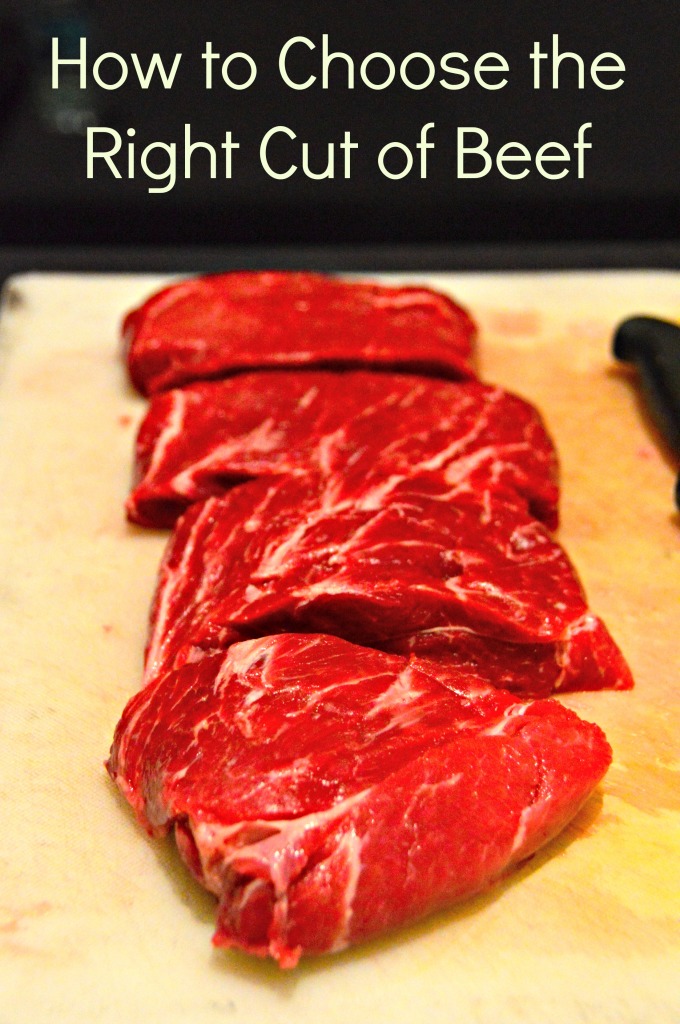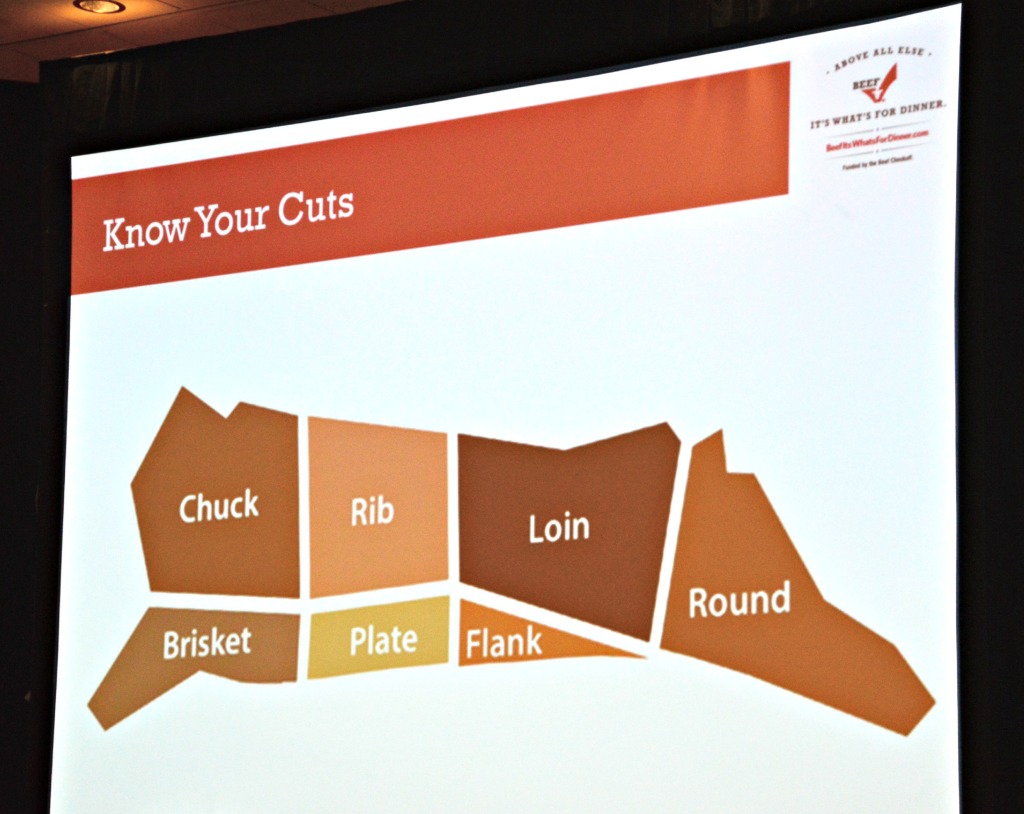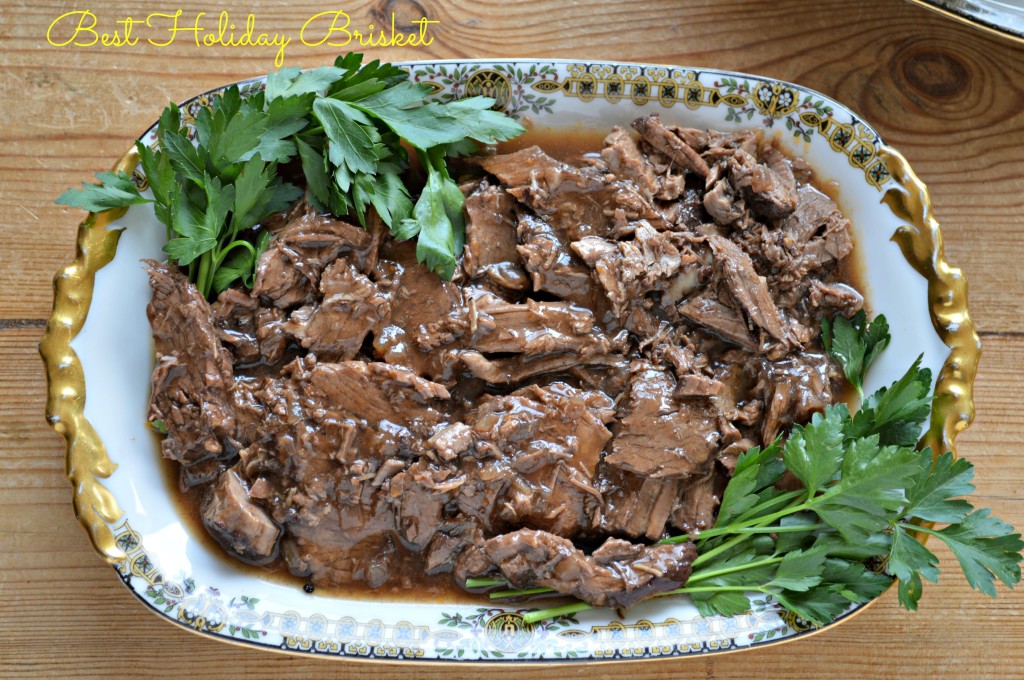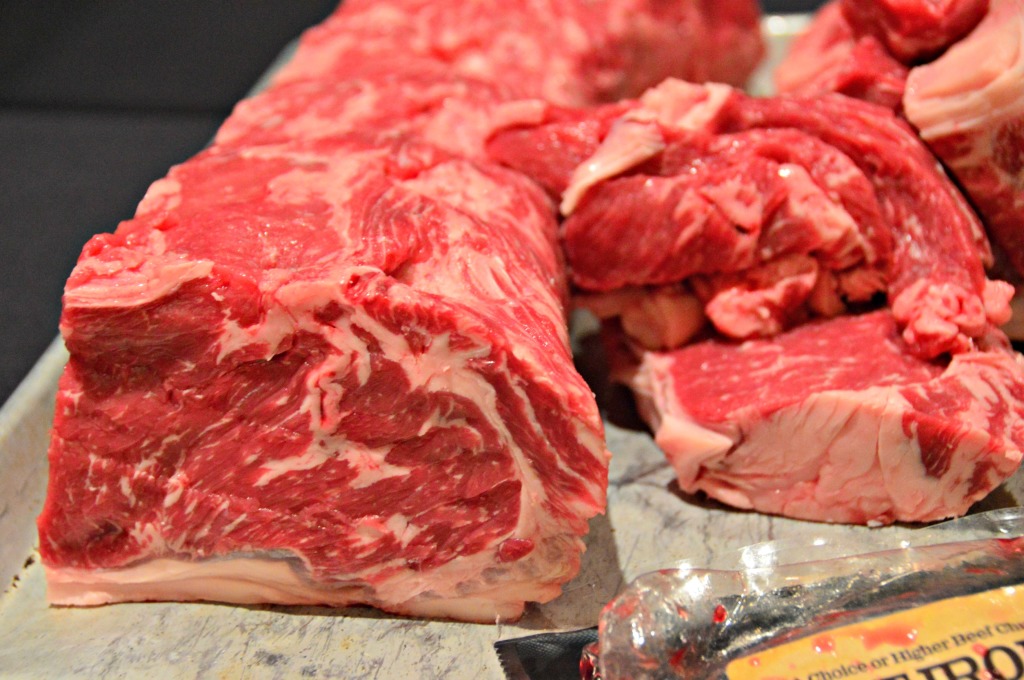This is the continuation of a . While I was at the International Food Bloggers Conference in Seattle last week, I attended an informative session put on by the consumer education organization Beef. It’s What’s For Dinner. I am sharing what I learned at that session with you in the hope that you can approach the meat counter with confidence.
Yesterday I talked about different ways that beef cattle are raised and how that affects taste and quality. Today, I will talk about what happens after an animal is harvested and broken down into the cuts of meat that we see at the butcher. As we all know, there are so many different cuts of meat available and the prices vary widely. What determines the price of the different cuts? And where can consumers look to find good value? How is it that new cuts of beef like flat iron steak or skirt steak appear out of nowhere? It’s still the same old animal as before, right?
First, how much a piece of meat costs depends on how and how long it was aged. We hear about aging with other foods like cheese and wine. With beef, aging means holding the meat from the time the carcass is cut into roasts and steaks until it is sold. (It’s not about how long you keep it in your freezer or refrigerator once you get it home.) This aging process allows for tenderness and flavor to develop in the meat and it is essential. The minimum aging period is two weeks but three more typical. Some restaurants age their beef for even longer and advertise that as a selling point.
There are two types of aging: wet and dry. Wet aging, the most common, is when the meat is held in a sealed environment to keep out air. Dry-aging, which you mostly hear about at high-end steakhouses, is aging without benefit of a vacuum package. The outer surface of beef actually dries out and to prepare the steak, the chef has to trim off the outside. Wet and dry aging both improve tenderness but the difference is in the flavor. Dry-aging concentrates the juices and flavor to the interior of the steak, so what remains after the outside is trimmed has an intense, deep flavor. But it’s expensive because twenty percent of the product is actually discarded before use. By the way, don’t try dry-aging at home unless you really know what you are doing!
Every cow that is harvested is divided into two sides, which are mirror images of each other. Thus, there is two of each cut from every animal. A side of beef each weighs 400 lbs. This graphic represents one side. As you can see, the side is broken down into sections. The main sections are chuck, rib, loin and round. The brisket, flank and plate are known as “thin meats.” (As a fan of brisket and flank steak, I feel that “thin meats” is slightly unfair characterization.)
The chuck, brisket and round sections are located around the animals’ limbs and those muscles are used for locomotion. That means that those sections have more connective tissue and are less tender. By contrast rib and loin come from the middle of animal and used more for support. Those section are therefore more tender. The highest value cuts come from middle of carcass, which are known as the “middle meats.”
Obviously, these larger sections are then broken down into the steaks, chops and roasts that we see at the butcher counter. The more tender cuts are going to be the more expensive. That is not to say that you cannot enjoy the tougher cuts of beef. You simply have to know how to cook them the right way to break down that connective tissue for a good eating experience.
Tougher cuts, like chuck roast and brisket, for example, benefit from long, slow cooking and also cooking in liquid. One of my favorite cuts of meat is flank steak because it is relatively inexpensive, lean and cooks quickly – like 7 minutes a side quickly. Because it is so lean, it helps to marinate flank steak before grilling it and be sure to slice it thinly across the grain for serving. The grain, by the way, is the direction of the muscle fibers and it is quite easy to spot on a flank steak. Give skirt steaks this same treatment.
One cut that is a particularly good value is top sirloin. It comes from the the middle meats, but is still reasonably affordable and lends itself to a variety of preparations. One way to stretch your meat budget is to play with portions. Instead of serving whole steaks, you can cut top sirloin into cubes for kebobs or even stew meat. Or slice it thinly for stir-fry. Add lots of vegetables to round out your kebobs, stews and stir-fries to make a generous meal that is well-balanced. One tip: Use sharp knife or you can freeze the top sirloin for around 20 minutes to make cutting easier. Also, be sure to keep your cubes the same size for more consistent cooking.
Here’s another idea: investigate buying a whole strip loin from a wholesaler. This is what the butcher would use to cut strip steaks. It’s actually easy to do at home and you can save $1-$2 per pound. Before you sharpen your knife, however map out the cuts. Start at one end and measure an inch and cut down for a traditional strip steak. Trim off the outer fat off once you’ve cut the steak. You could cut the whole loin into strip steaks this way, or even halve the steaks for smaller portions. Another alternative is to cut loin lengthwise for larger roasts.
I hope that these two posts have helped demystify some of the butcher counter jargon and given you the tools you need to shop smarter at the meat counter. If you have more questions, go to the Interactive Butcher Counter at Beef. It’s What’s For Dinner.
Full disclosure time: this posts have not been sponsored in any way. I received a discounted ticket to IFBC in exchange for a commitment to write at least three posts about my experience and this is one of those posts. In addition, I received a set of steak knives as a gift from Beef. It’s What’s for Dinner. because of my social media coverage of its session. As always, all opinions expressed herein are entirely my own.










great post. I watched a demo from Beef Checkoff, Beef, What’s for Dinner? at the food and Wine Conference in Orlando earlier this year. Your write up is extremely informative and well written. Thanks for sharing.